There is a distant rumbling on the Karakoram Highway. Far off and muffled by sheer cliffs of buff-colored rock, the deep sound is interwoven with a higher-pitched, musical note that is difficult to place yet insistently present and is swaying in circuitous rhythms around the engine and tire-on-concrete roar.
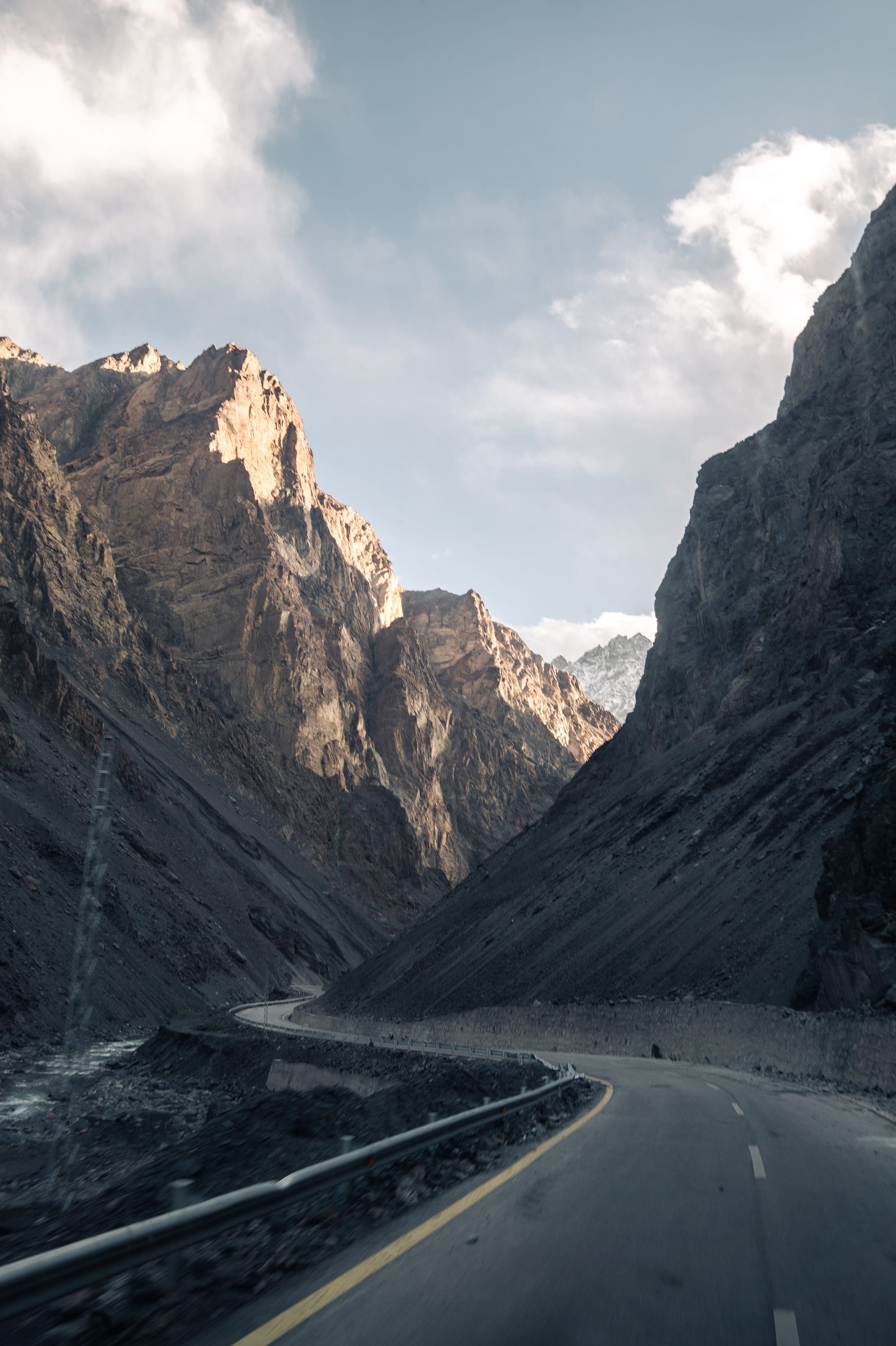
From the northern town of Sost, high in the Karakoram mountains—where the road leads ultimately into China—down to Lahore and Karachi in the Punjab, and across to Quetta on the Afghan border, these bejeweled juggernauts of the highways turn heads as they traverse high pass and plains alike.
Time spent on any Pakistani road inevitably leads to an encounter with the iconic painted vehicles. With over 277,000 trucks currently trundling the country’s roads, this initial meeting is sure to happen sooner rather than later. Flamboyantly decorated and utterly individual, the Pakistani lorries carry not only incredible visual appeal but unmistakable auditory presence as well. Their swaying chains, bells, and multi-channel horns create an incredible and distinctive cacophony of sound, one which other drivers, traders, and locals along the well-worn truck routes will be able to differentiate to particular businesses and drivers long before they come into visual range. The “jingle” of these trucks is as intangibly part of their cultural appeal as their visual aspects.
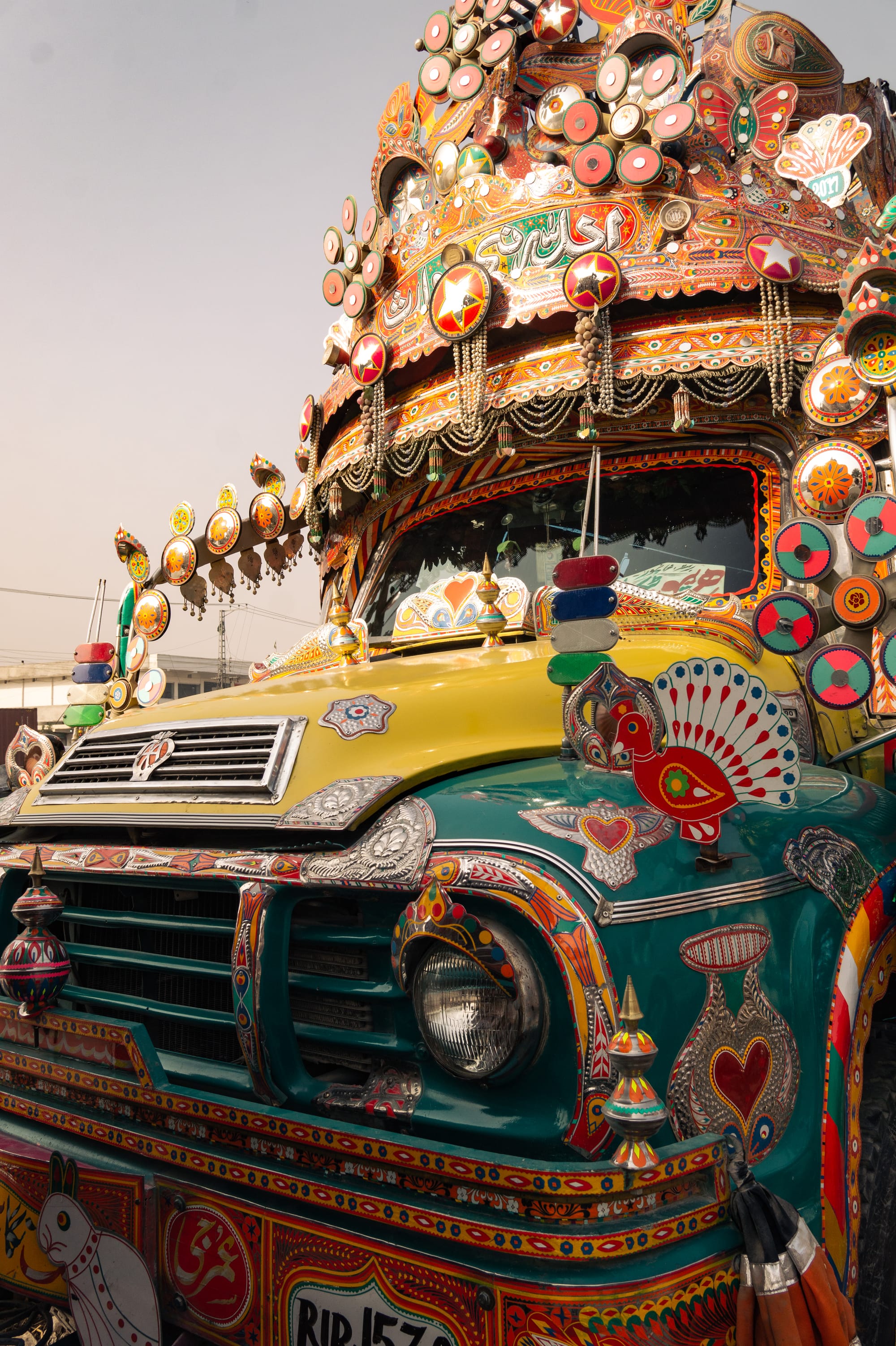
These mobile artworks are, in the main, the freight lorries which transport goods across the country’s infrastructure, but there are myriad other passenger-transporting vehicles in the cities which are equally decorative, equally iconic, and have adopted and adapted this stunning style to give their work an edge.
Discussing these artistic creations in marketing terms feels like it sullies the endeavors and expression of their creators. There is no doubt that there is more value than just an element of visibility for their owners, drivers, and painters. The focus on creating the best, most beautiful, and most striking artistic vision is held above and beyond the economic “marketing” value of this form of visibility firmly by the trucks’ creators. To consider that the creation and beautification of these trucks can cost up to 200,000 Pakistani rupees (nearly $1,000 USD) per vehicle, a sum which sits around four times higher than the truck drivers' average annual salary of 50,000 PKR. These sums, whilst varying from truck to truck, and business to business, illustrate the level of commitment to this as an artistic endeavor rather than a straightforward economic one.
The soul of these lorries is located in the artistry of their makers, people who have dedicated 20-plus years to developing their craft and trade and are master artisans in their field. Whilst the business or vehicle owner may prefer a particular style of theme, it is ultimately the artist who will determine the creative direction and carry the truck and driver on that journey with them.
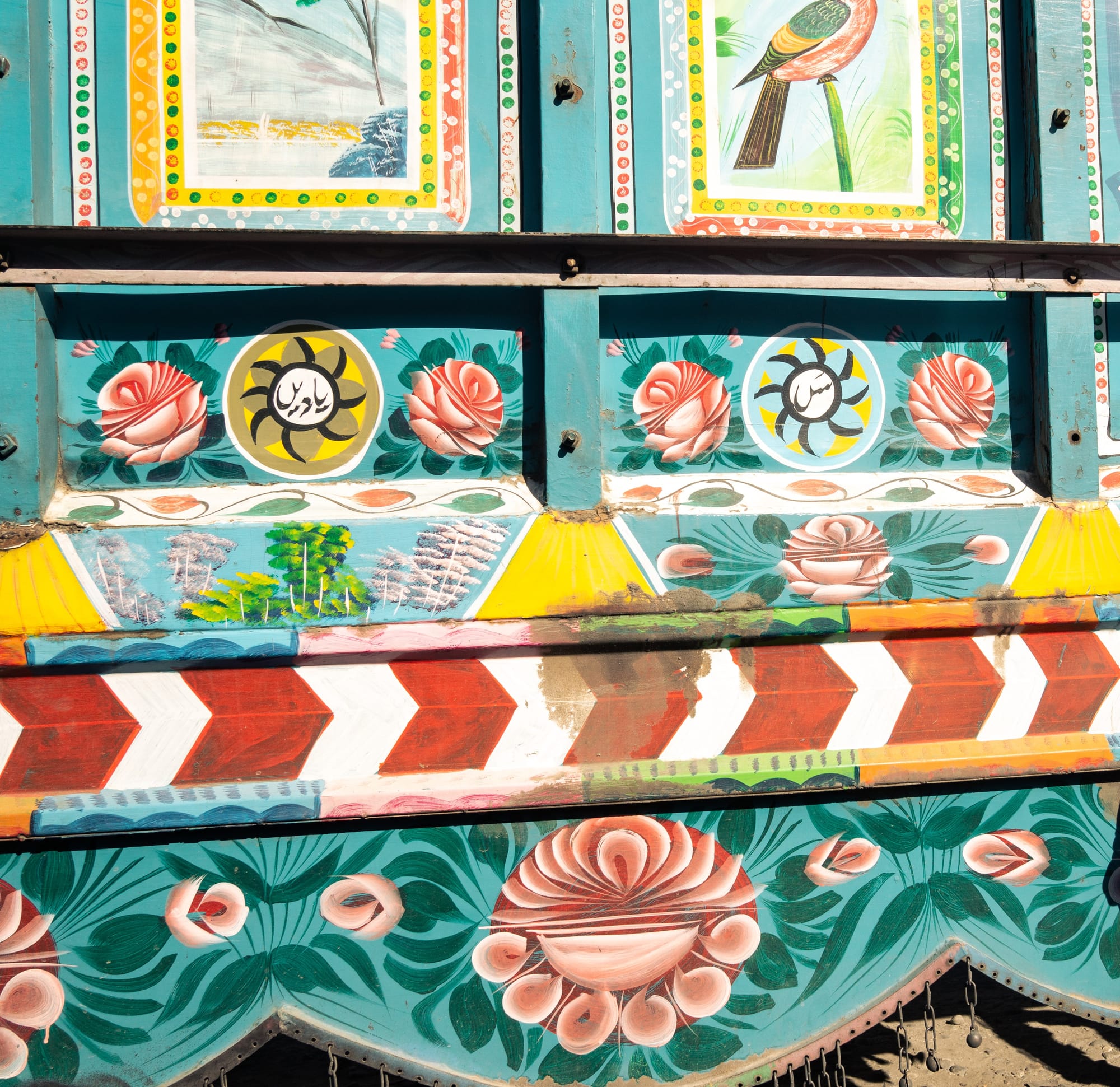
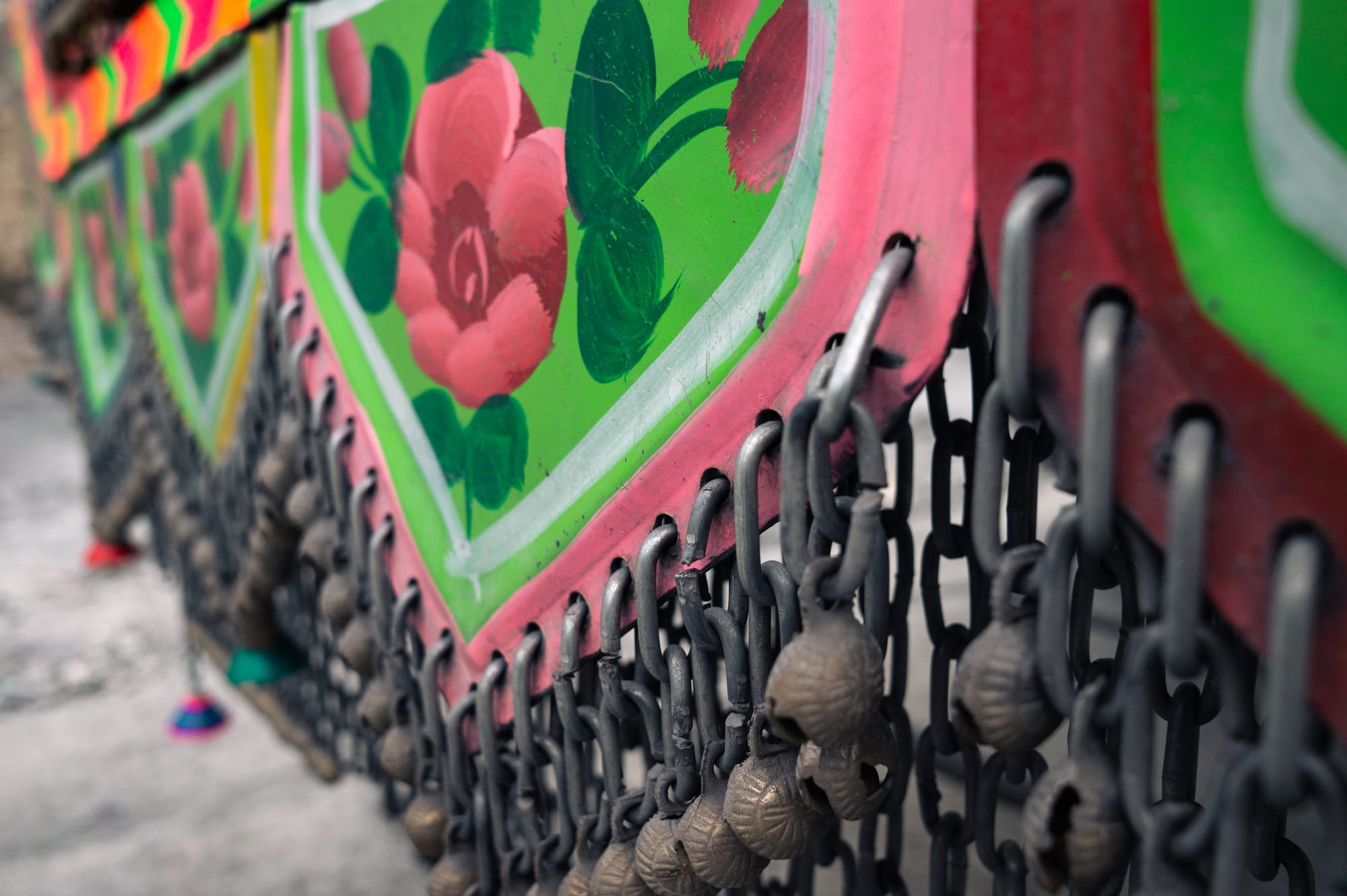
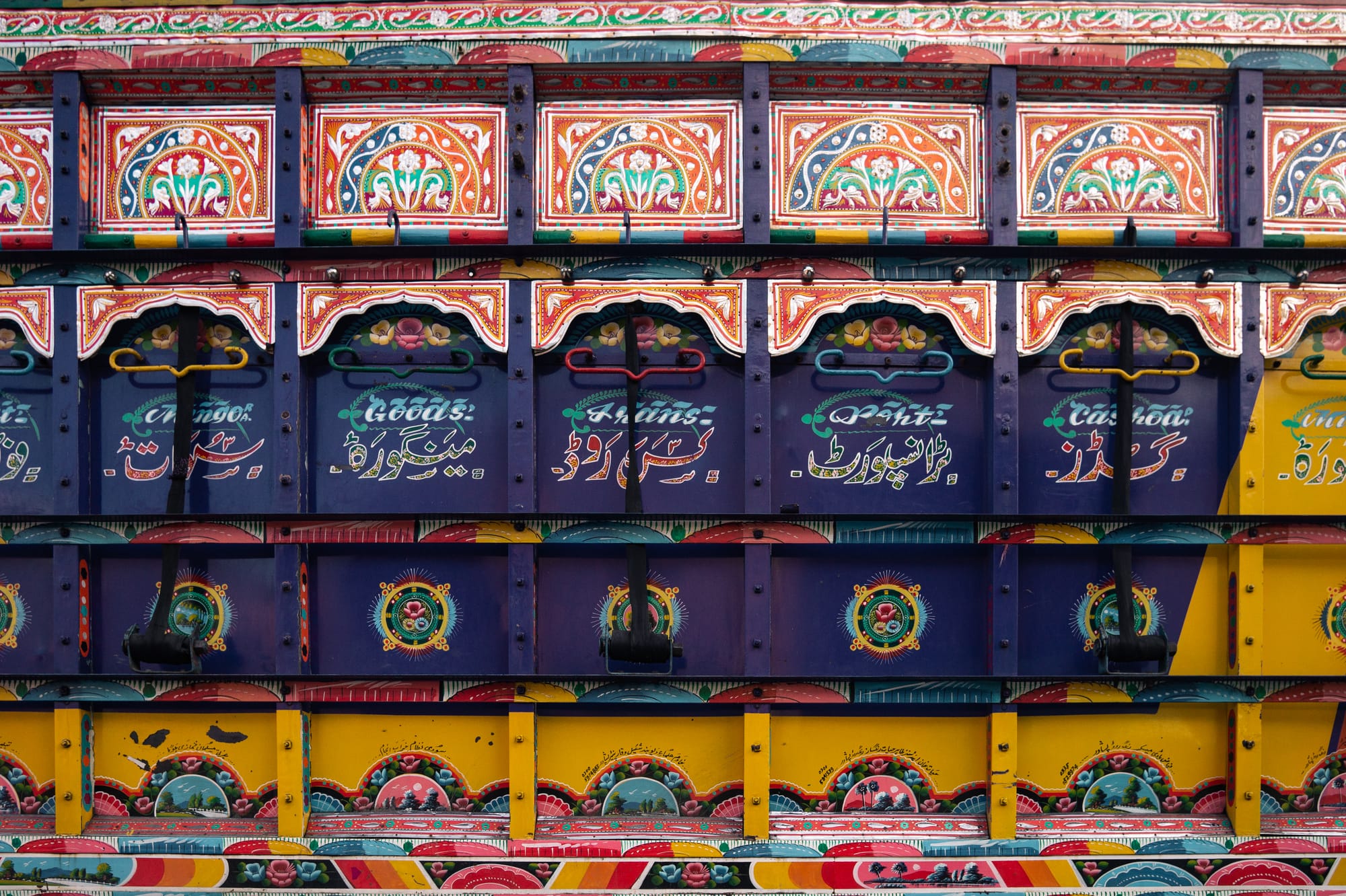
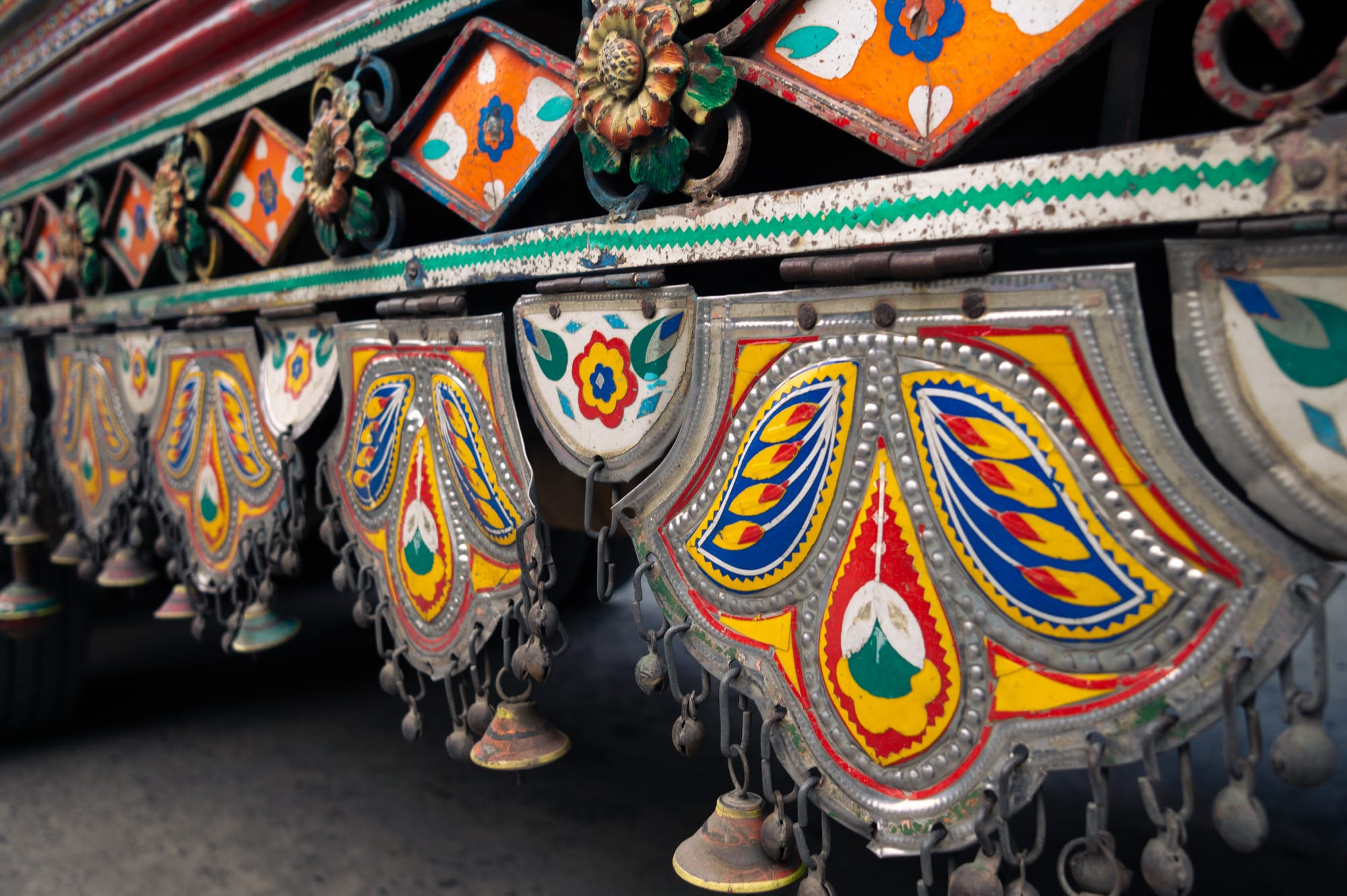
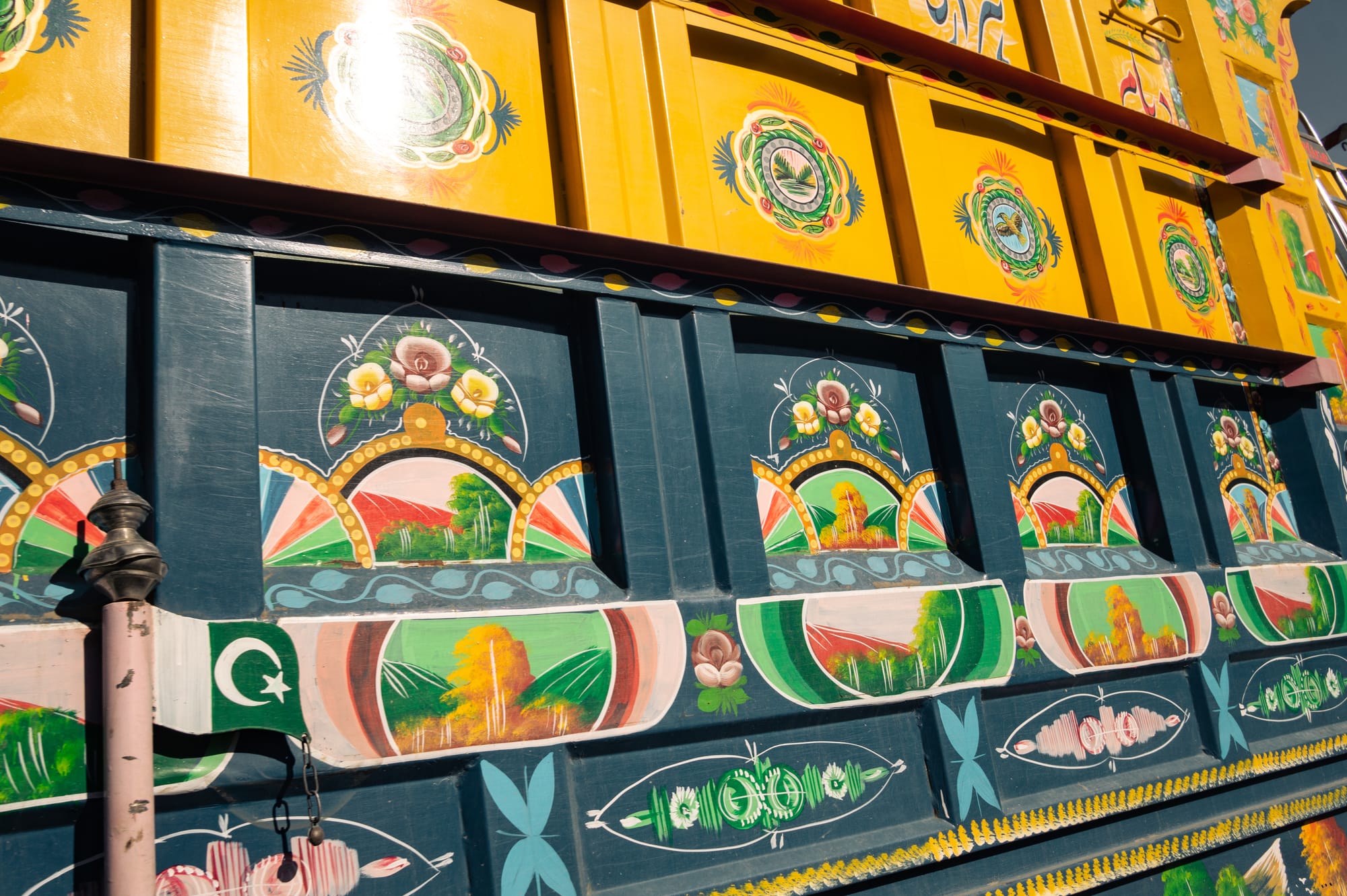
Intricately layered wood and shiny beaten metal panels with vibrant color schemes, alongside loops of tinkling chains, bells, pompoms, tassels, and stickers. Photos by Rae Hadley
All along the roadside leading into Rawalpindi, there are workshops and yards dedicated to the repair and further beautification of the trucks. Intricately layered wood and shiny beaten metal panels with vibrant color schemes can be found in these yards, alongside loops of tinkling chains, bells, pompoms, tassels, and a multitude of Pakistani flag stickers. The opportunity to update, repair, and continue the personalization of these vehicles is necessary from the hard grind that traversing the country’s roads has on both driver and truck.
Depictions of animals, political or cultural heroes, Pakistani national pride, and any number of stylized geometric patterns or Urdu script can be employed to adorn every inch of the truck. The construction of large prows or “crowns” increases the space available for further embellishment and, of course, decorative lights, which assist in transforming from day-to-night wear.
Phool Patti Community Enterprise, a Pakistani Truck Art community led by Ali Salman Anchan, has been traveling internationally to promote what Anchan terms as this “indigenous art form.” Most recently, they were part of the lead-up to the Qatar/FIFA World Cup 2022. In collaboration with Qatar Museums for their “Jedariart” program, truck artists have been demonstrating and elevating this well-known style on the world stage with its towering murals. Earlier in the year, in recognition of Pakistan’s role in football manufacture, stylized and handpainted “truck art footballs” were presented to the FIFA Trophy Tour delegation, showing that Pakistan’s cultural heritage, and in fact all art, can transcend borders and speak to the universal human need for expression and connection, as well as celebrate the cultural style of different regions of the world.
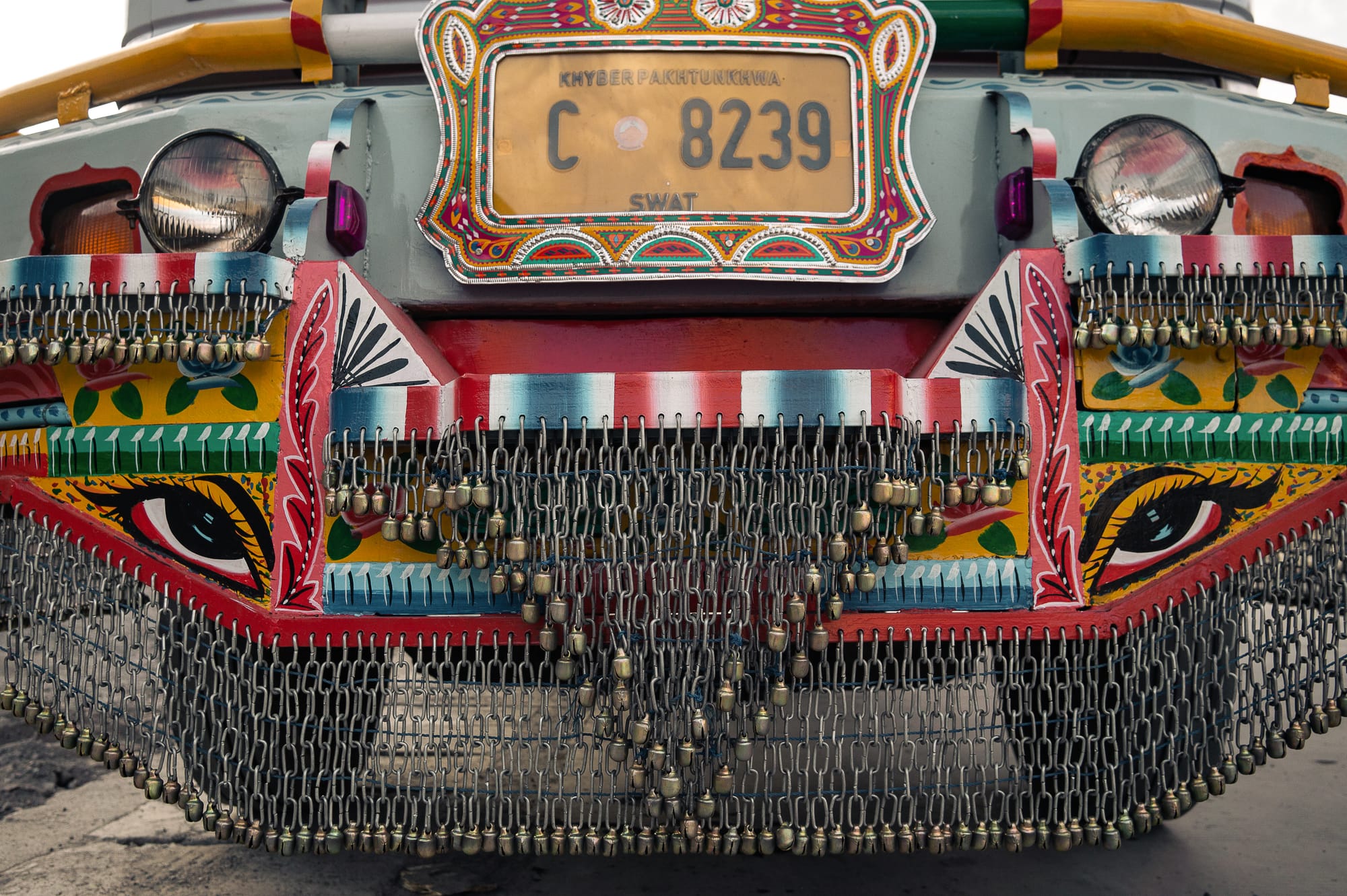
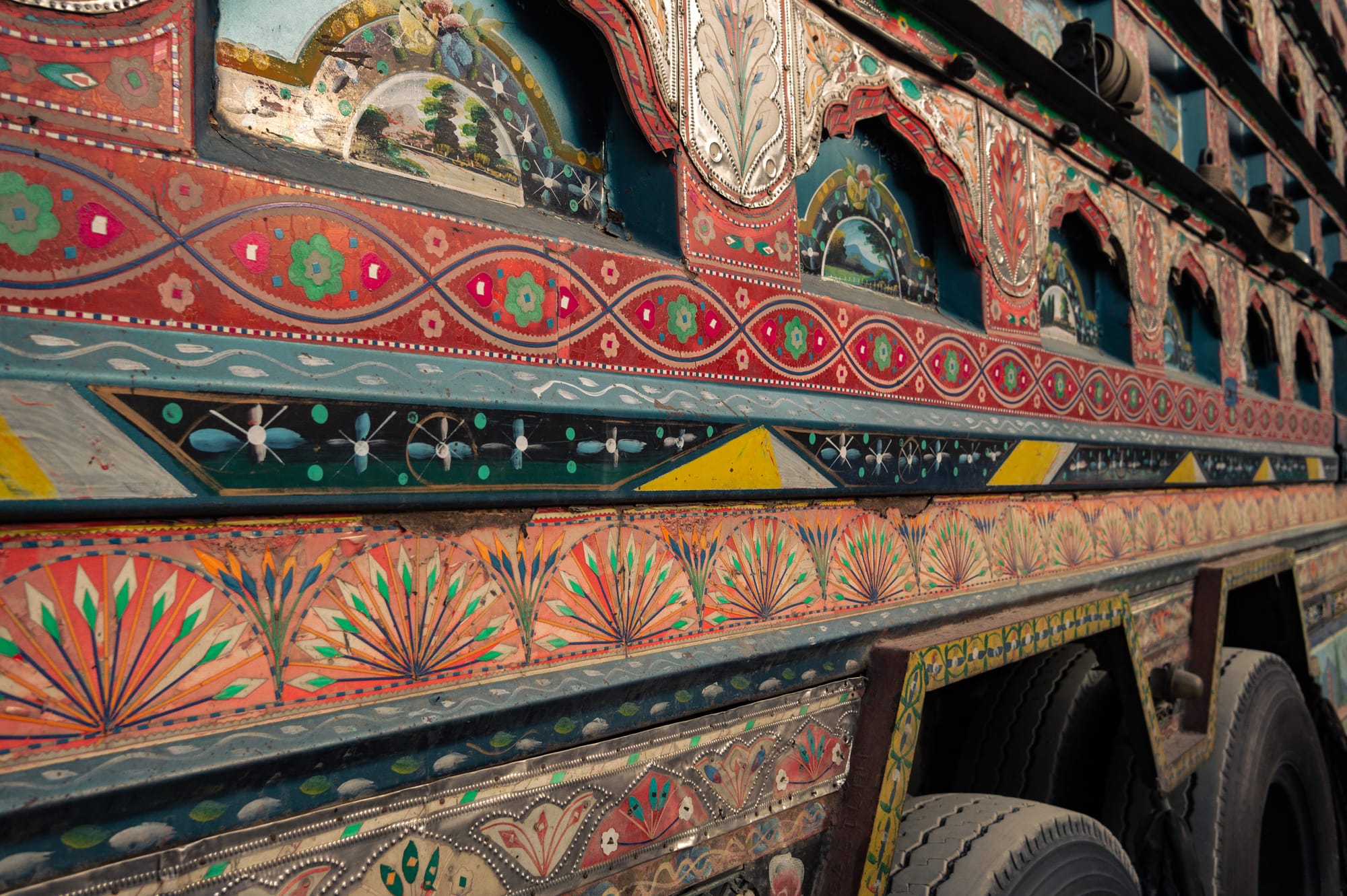
Pakistan’s cultural heritage can transcend borders and speak to the universal need for expression and connection. Photos by Rae Hadley
Farah Yusuf Ali, author of the article “The Bold and the Beautiful: Portraiture in Pakistani Truck Art,” writes of the “glocalization” of Pakistani truck art. “Their fearless experimentation and willingness to include various global mass media trends have lent the genre a hybridity that has elevated its popularity locally and globally.” She positions the style as “kitsch” but is quick to clarify that this is not a pejorative, diminishing, or segregating statement, but one acknowledging and celebrating the “playfulness,” exuberance, and joy inherent in the art form. Ali maintains that the history of this form of “folk art” has been handed down from the days of the Mughal Empire and of the times when decorating one’s livestock: camels, horses, etc., was akin to the decoration of current-day transportation.
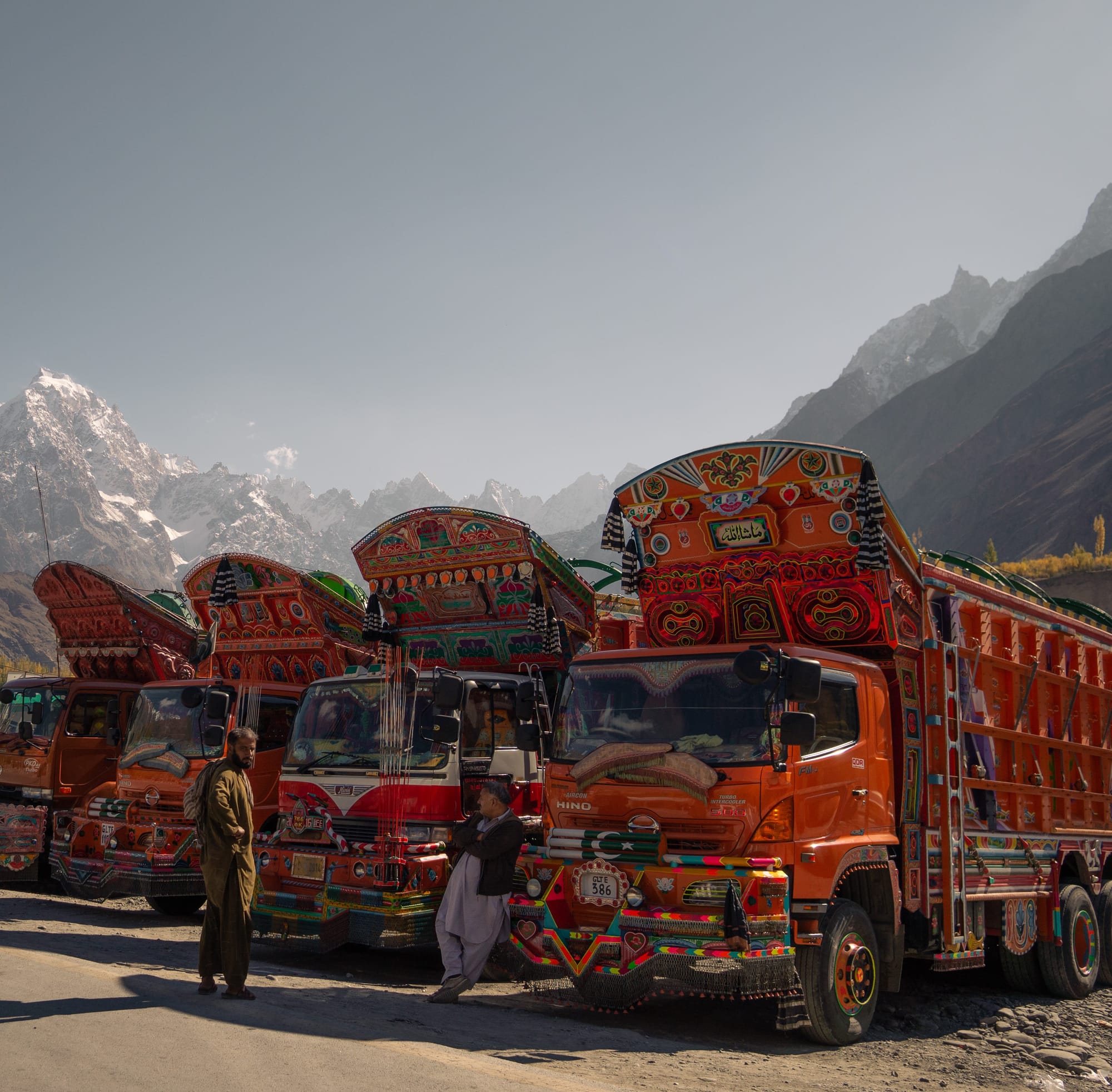
More recently, the use of “truck art” within activism has seen Samar Minallah Khan, renowned Pakistani filmmaker and anthropologist, initiate the use of this form of folk art for humanitarian purposes. Her award-winning “Moving Billboards” project has, through the use of the truck art style and the creation of imagery which amplifies the voices of missing children or girls—potentially forced into early marriages or missed schooling—been able to carry messages advocating for education, equity, and respect across wide geographical areas and in ways that people in both cities and rural communities can access. As a result of the missing children’s portraits traveling the country’s roads on the backs of these trucks, there have been instances of families being reunited and children being given more opportunities for extended learning.
A sensory understanding of the rich, joyful nature of Pakistani people and culture as a whole
Far from being an outdated “cheap” form of expression, “truck art” is thriving, showing that it has the tenacity, wit, and intelligence to remain in Pakistani and global consciousness. Furthermore, it is growing with new forms of media—Anchan has called it a form of “social media”—and is accumulating devoted fans worldwide. The intricate designs and the varied, personalized use of its broad style indicate that evolving and flowing across the ages is exactly what this art form has employed in the past to survive until now.
For those of us that have experienced the breadth of the form at its most immediate—at high speeds on the mountain roads of the KKH, driver and mate grinning and waving wildly whilst tooting their horn in joy at seeing an errant solo cyclist—there is a love, born of pure exhilaration and joy of living in the moment. Memories of these incredibly beautiful, exuberant beacons of light are intertwined with images of blue skies, the cathedral peaks of northern Pakistan and a sensory understanding of the rich, joyful nature of Pakistani people and culture as a whole. Truck art is a solitary aspect of this country’s culture, but it is indicative of their love for color, their love for humor, and above all, their love for community.
A version of this article appears in print, in Issue 1 of Álula Magazine with the headline: “Mobile Canvas: Pakistani Truck Art on the Move”.

